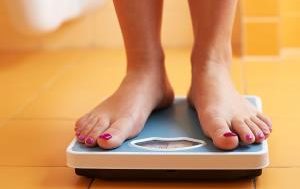Looking for an easy-to-start workout regimen that can show results, without having to go to the gym or spend money on equipment?
Try walking.
It might not seem like the most efficient exercise available, but experts on the topic say it can help with weight loss, mental health and more. Even a few thousand steps a day can burn hundreds of calories, and it’s easy to add some modifications to your routine to lose weight.
Can walking really help you lose weight?
According to Cedric Bryant, Ph.D., the president and chief science officer of the American Council on Exercise, walking “certainly can” help with weight loss.
“It is a low-impact aerobic exercise that allows individuals to expend energy and burn calories, so it can certainly help with weight loss,” said Bryant.
Some recommend walking as a form of exercise due to its simplicity and accessibility.
“I am a fan of walking as a form of movement — especially if you’re just getting started,” said Marisa Moore, a registered dietitian in Atlanta, Georgia. “What’s most important is finding a type of activity you like and will do.”
If you are using walking as a tool to help lose weight, Bryant recommends walking for at least 45 minutes per day most days of the week.
“The basic recommendations in terms of general health and well being is to just to meet a minimum threshold of about 30 minutes of activity on most days of the week,” he said. “If you’re desiring to lose weight, you really want to work in the 45 to 60 minute range. The thing to understand is that it doesn’t have to be all in one walking session, you can break it up through the course of that day.”
Bryant recommends breaking up those walks into two or three large chunks.
“Maybe you go for a 30 minute walk in the morning, and then maybe it’s another 15 or 30 minute walk following dinner or during your lunch break,” he suggested. ” “The idea is to try to accumulate, you know, for about 45 minutes to an hour of walking, which tends to correlate best with reasonable weight loss or or better weight control.”
What kind of weight loss can you expect?
Bryant said it’s difficult to guess how much weight one may lose while walking due to the amount of factors involved, but said that people can expect to burn about a hundred calories for every thousand steps they take.
“Generally, the amount of weight once can expect to lose and the impact that you’ll derive from usually going to be a function of how frequently you do it in terms of days per week, as well as the duration that you walk and also the intensity at which you walk,” he said.
Samantha Cassetty, a registered dietitian based in New York City, explained that “the average 40 year old woman who’s 5 ‘4” and 165 pounds might lose five pounds in two months if she went from inactive to walking for an hour five times a week.”
But you can’t out-walk a bad diet, Cassetty said. “She would have to make some healthy tweaks to her diet, which result in a slight calorie deficit (around 100 calories a day).
“Maintaining this workout routine and the healthy eating habits can help keep those five pounds off, but the walking alone isn’t likely to result in additional weight loss,” Cassetty said.
“Generally speaking, the average healthy adult will likely notice a difference in how they feel by incorporating more movement and sprucing up the diet,” said Moore.
“You may or may not lose weight with diet and exercise changes though. Whether you lose weight can vary with personal genetics and metabolism, age, overall physical activity level, stress levels and even sleep.”
How can you get started?
Walking is one of the easiest exercise routines to start — just pick a route and get going! Bryant recommends wearing comfortable footwear, but there’s no need to invest in fancy shoes or other gear.
A good speed to start at is walking at a pace of about three miles an hour, or walking one mile in twenty minutes.
If you’re looking for a metric to compete with, Bryant recommends trying to work your way up to 10,000 steps, which will help you burn about 1,000 calories.
If you’re looking for a full-body workout, it’s possible to amp up your walking routine by changing the terrain.
“Walking uphill or inclining your treadmill increases the intensity and challenge of the walk,” Bryant said. “You can also introduce some intervals where you change your walking speed. If you’re outside, maybe, you know, walk really briskly from from from a stop sign to a stop sign and walk at a normal pace until you get to your next stop sign. If you’re on a treadmill … walk comfortably for three minutes and then for the next minute or two, walk you know a half a mile an hour faster.”
You can also add weights, though Bryant recommends avoiding hand weights and instead investing in a weighted vest, which can make you push yourself harder without putting stress on the joints.
If you’re looking for an equipment-free way to burn more calories, you can try doing something as simple as waving your arms. A study by the American Council on Exercise found that moving the arms vigorously expends more calories.
“It may look a bit odd but but vigorously pumping the arm certainly adds to the intensity of the workout,” Bryant said.
What are some other health benefits from walking?
Of course, there are more benefits to walking than just losing weight. Like any other aerobic exercise, walking will help improve the function of your cardiovascular system, will lead to better blood sugar control, and help lower blood pressure.
“Any benefit you can get from other forms of cardio exercise, like cycling, running, swimming, you can derive all those same benefits while walking,” Bryant said.
Walking can also have benefits for mental health. Bryant said that the exercise can help relieve and manage stress and anxiety, and said it can be an especially helpful activity during the coronavirus pandemic.
“I would tell people, during this time of a shelter in place and stay at home orders and so forth, to really pay attention and focus on how walking makes them feel, because I think that can serve as a great motivator to kind of keep them in the game in terms of continuing to walk,” he said.



